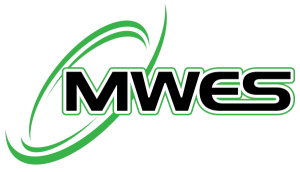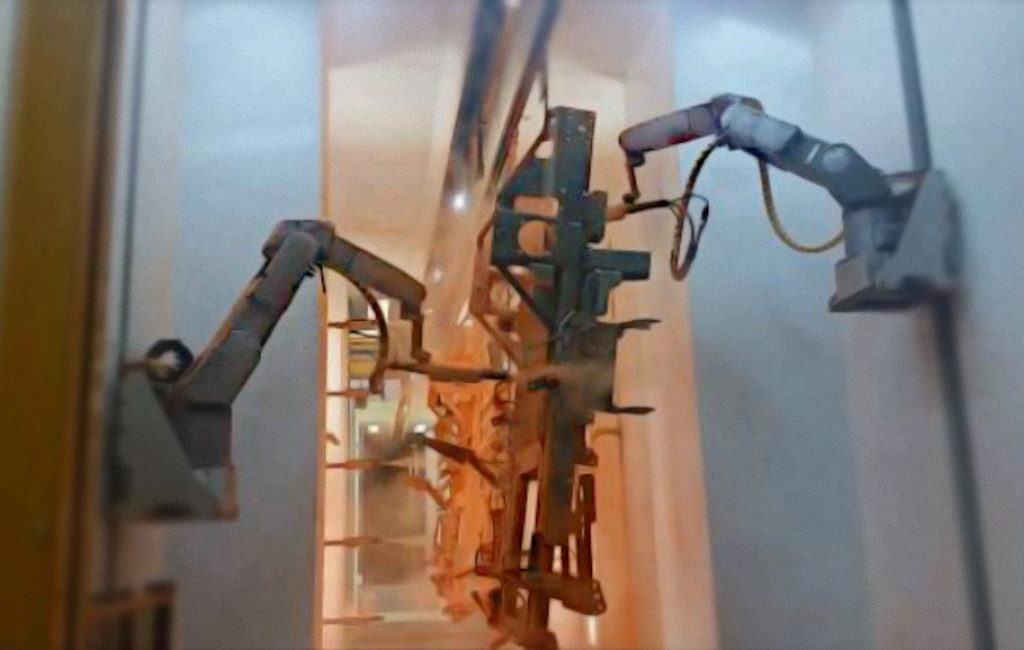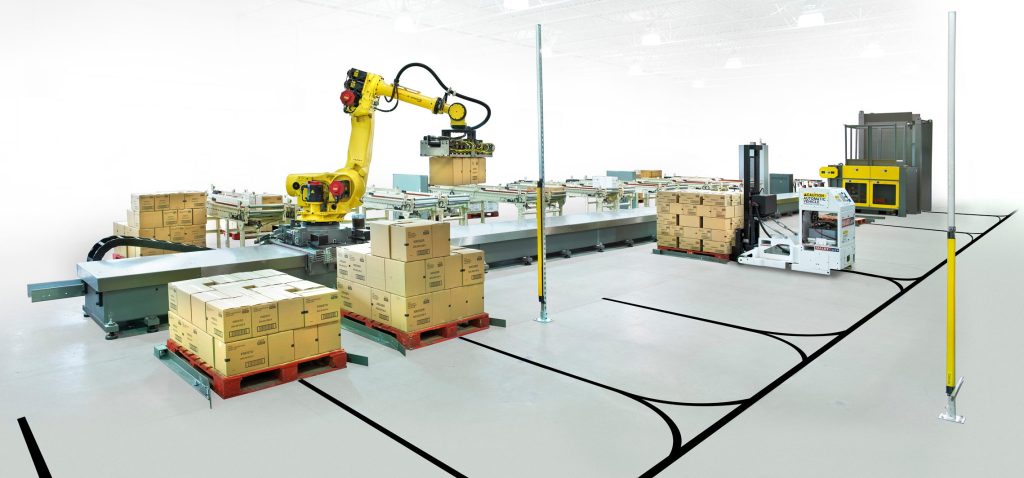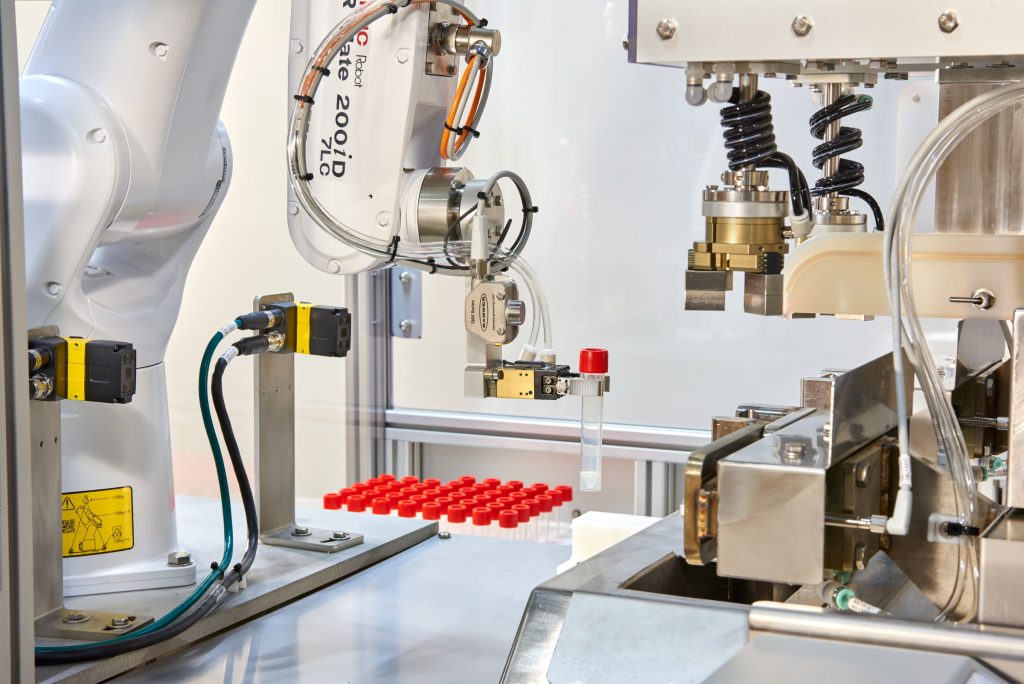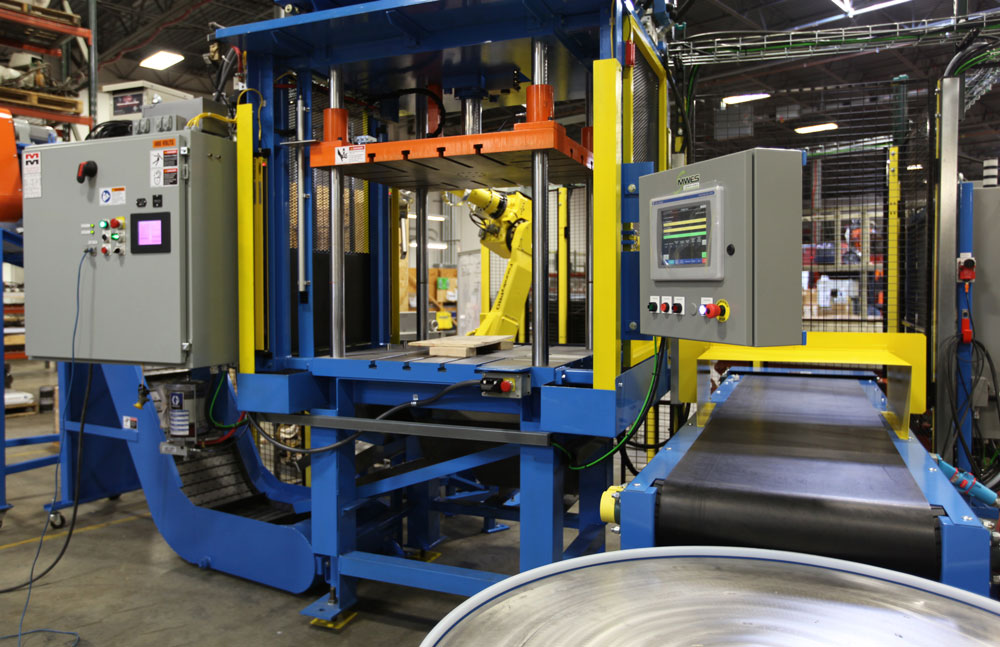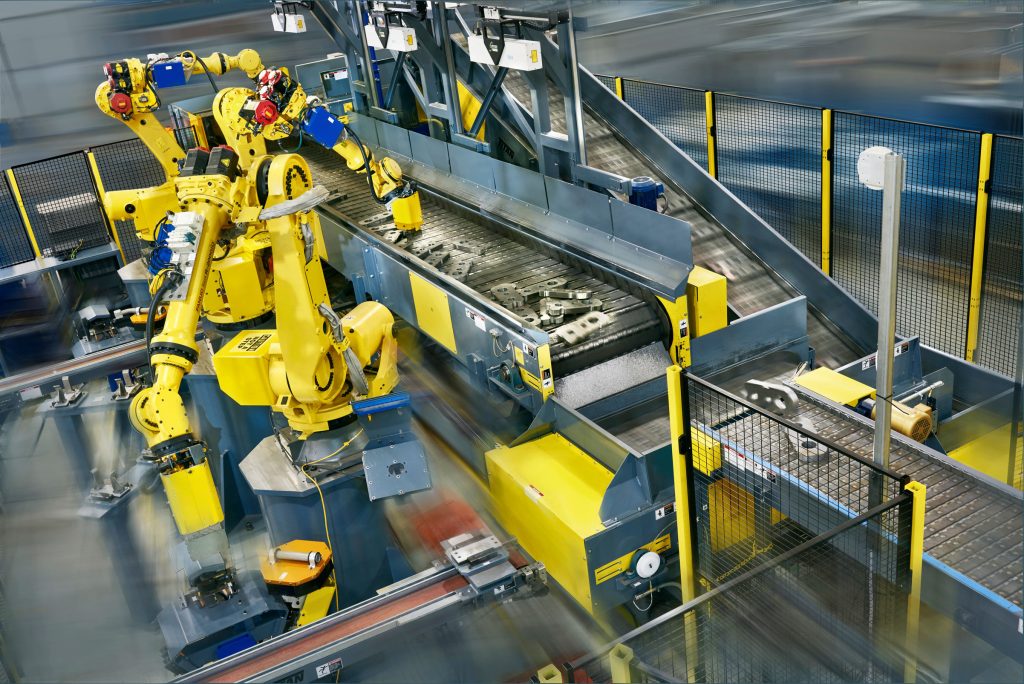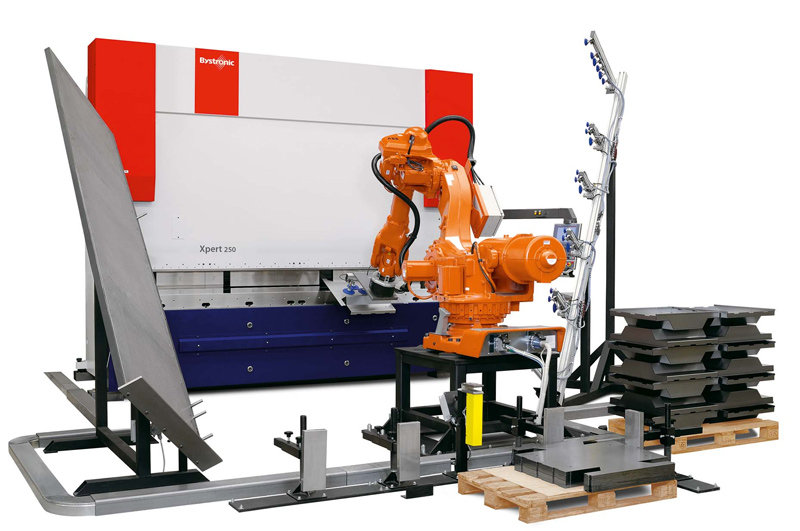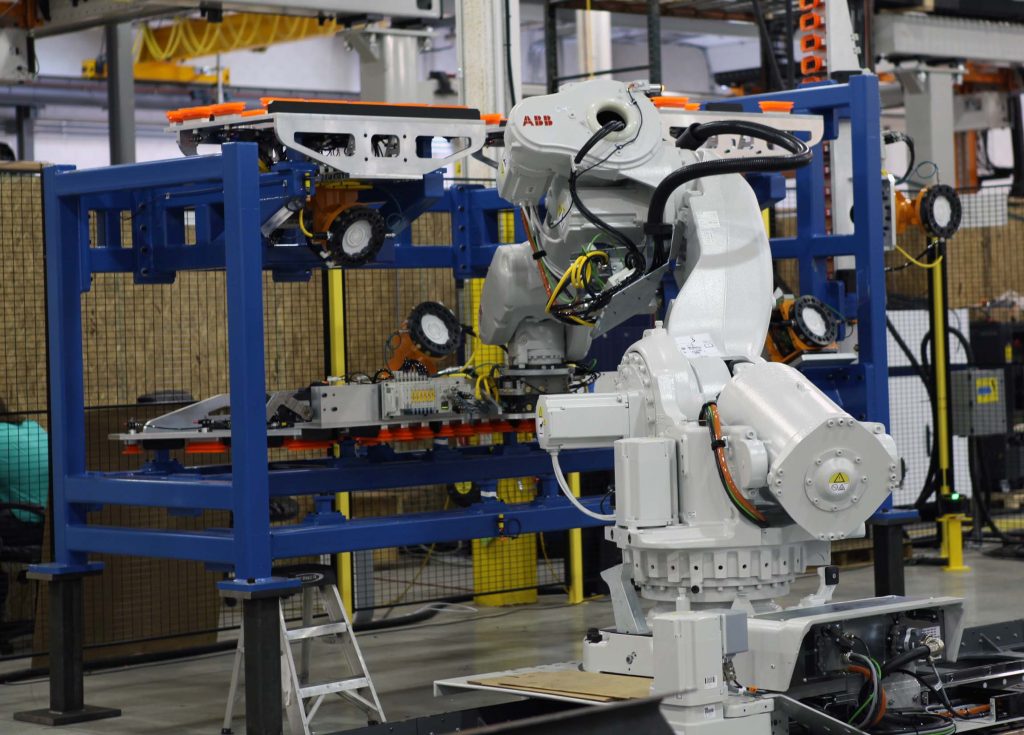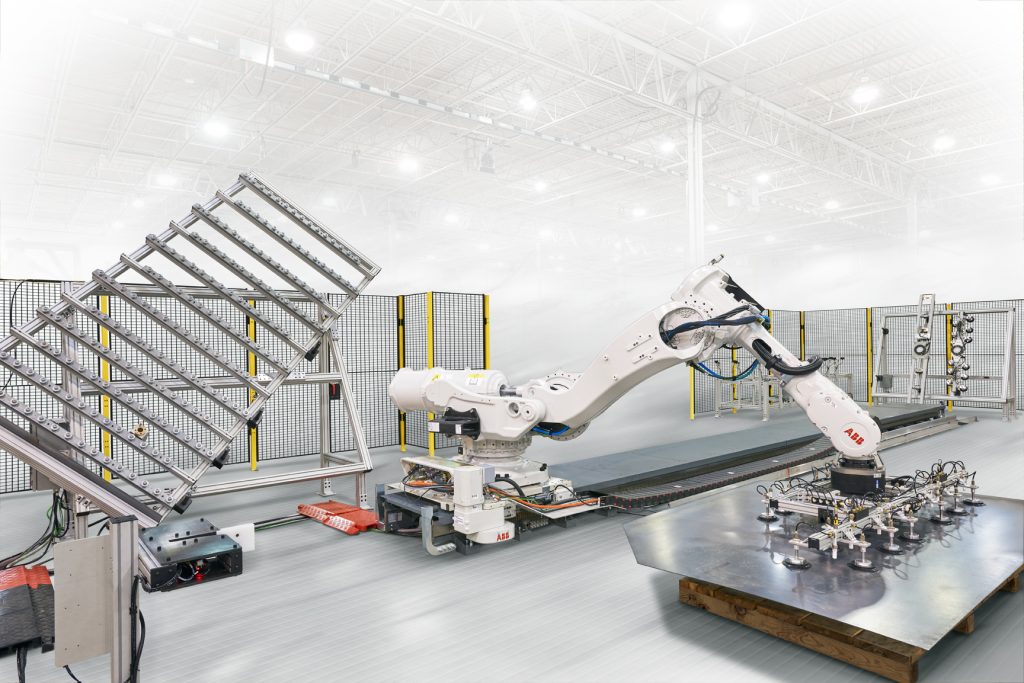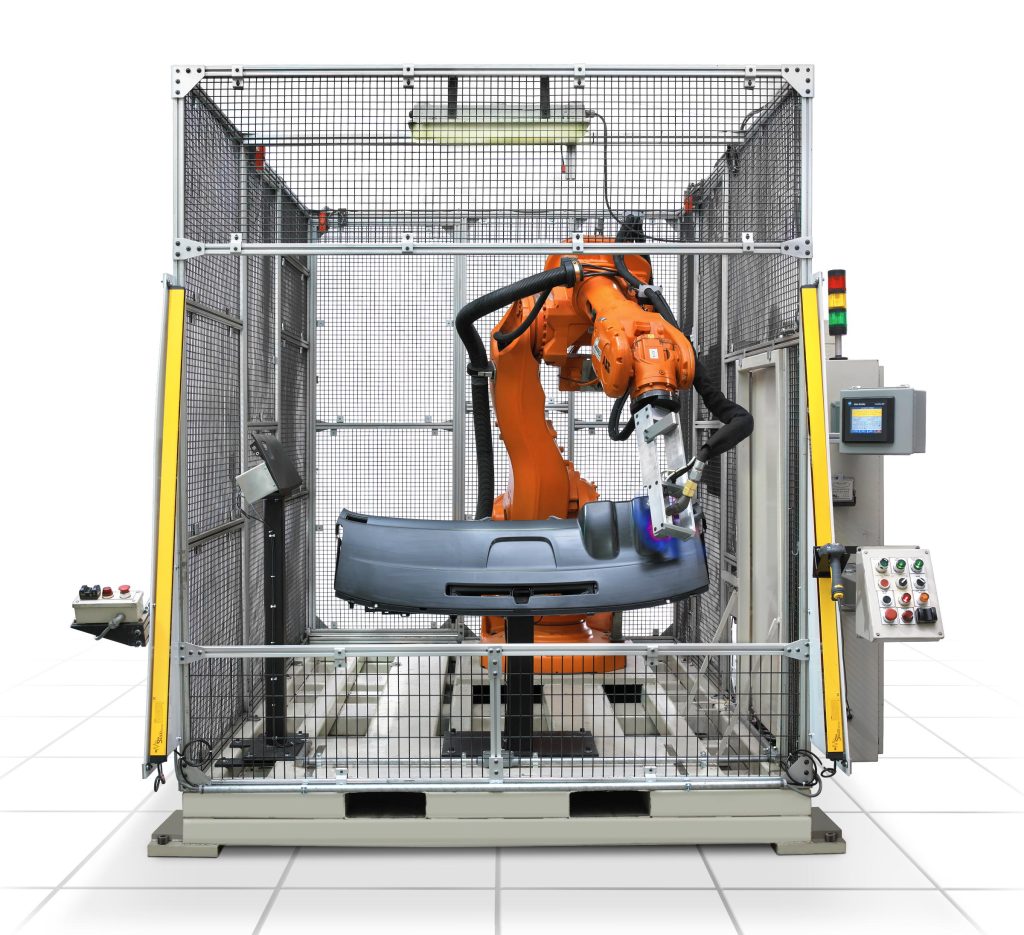Robotic Machine Tending
- Home
- Industrial Automation Capabilities
- Robotic Automation Systems
- Robotic Machine Tending
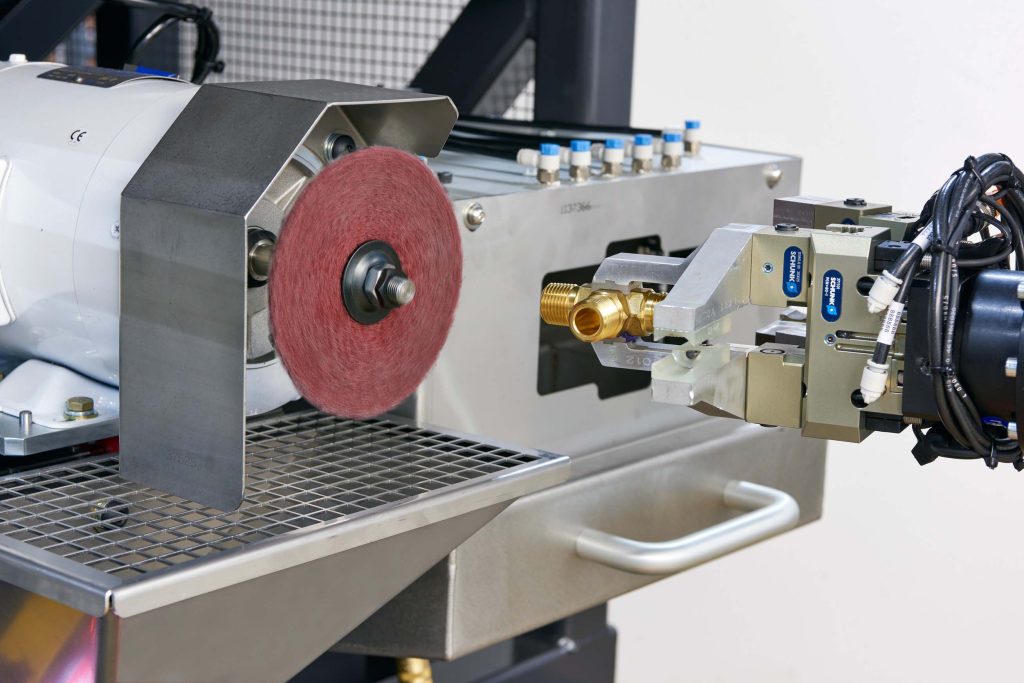
Modernize Your Machine Tending with Robotic Automation
While there is a complexity of benefits that can be had from the MWES machine tending system, how it works is quite simple. At its core is a standard robotic arm coupled to a machine vision system. These two are affixed to a rugged, self-contained structure that features expansion bays that could be filled with off-machine operations.
Working in tandem with the robotic arm, the machine vision system is trained to recognize and identify specific workpieces, their location and attitude. Once the part is acquired by the vision system, the information is sent to the robotic arm. The arm uses that data to properly grip the part for placement into the machine.
After the machining process is complete, the robot retrieves the part. At this stage, the MWES machine tending cell can be outfitted with many off-machine operations including blowing off the part, deburring or inspection. These extra operations can be other stations within reach of the arm or fitted directly to the machine tending systems structure.
The part can also be re-gripped by the arm at this stage and replaced with the machine tool for further operations in areas that would have been impossible to access in the introductory placement. Once complete, the part can be again run through the off-machine processes or simply placed on an outfeed conveyor, destined for other production steps.
The entire system is built on a style of programming that allows for easier adaptation. This style of machine programming allows for the changing of part features without the need to completely reprogram the machine. Not only does this style make it easier to integrate the machine vision components, but it also allows for the addition of new workpieces by simply copying and modifying machine recipes for sufficiently similar parts. The modifications, most times, can be done by machine operators through the system’s touchscreen. For completely different parts, it may be necessary to retain more specialized services to teach the system.
Standard Machine Tending Systems
The advanced MWES machine tending cells are designed to bring the true promise of automated machine tending to production facilities, by reducing the need for workers to fill part racks for presentation to the machine. The machine tending cells are also designed to offer value-added operations that can sidestep resetting machines or require operator intervention to do simple, off-machine tasks. Both of these features allow employees to tend to more valuable operations while increasing efficiency.
Benefits to Standard Machine Tending Systems
There are many benefits available to the users of an MWES system that can change the way companies approach machine-tending processes. The system’s functionality goes beyond just adding and removing production parts from a machine, it adds the opportunity to add flexibility and expandability to production operations.
Eliminate the need for custom racks and fixtures
MWES’ standalone, drop-in systems operate on machine vision and modifiable programming rather than rigid programming and specialized part fixtures to offer a step-change in machine tending operations. The robotic system uses machine vision to identify incoming parts and their orientation then relays that information to the arm’s control system. This means parts don’t have to be staged into racks perfectly, they just need to be presented to the machine with a certain side up.
Add parts quickly with easily modifiable programming
Machine programming innovates the process of adding new workpieces to the machine. By simply copying a previous machine tending control program and modifying for the new part, reasonably similar new components can be added to the system. This can be done directly at the machine itself using its touch screen HMI to facilitate. The intuitive process does not require highly skilled programmers, either. Many times, it can be performed by unskilled machine operators with minimal training.
Integrating extra steps and processes
Our system goes past merely placing the part in a machine and taking it out again. MWES’s machine tending systems can offer interim or finishing steps in the machine tending process to help close the automation loop on more complex machining operations. With capacity for off-machine operations, the work cell can blow off parts, perform deburring, inspections or other operations at any stage of the tending process. This is in addition to having the capability to perform repositioning operations on parts automatically. The re-gripping allows for working on other areas of the workpiece that couldn’t be operated on otherwise.
From simple part loading and unloading to systems, like our standard machine tending system that can also perform secondary operations, Midwest Engineered Systems is the go-to integrator for tending CNC machine tools, injection molding machines, or other specialized production equipment.
If your machine tending needs are outside of what’s available in the market, contact Midwest Engineered Systems. As a complete systems integrator with experience in a wide variety of markets and operations, we can develop automation systems that can handle even the most specialized applications.
Building the future of manufacturing, together
World-class Automation
